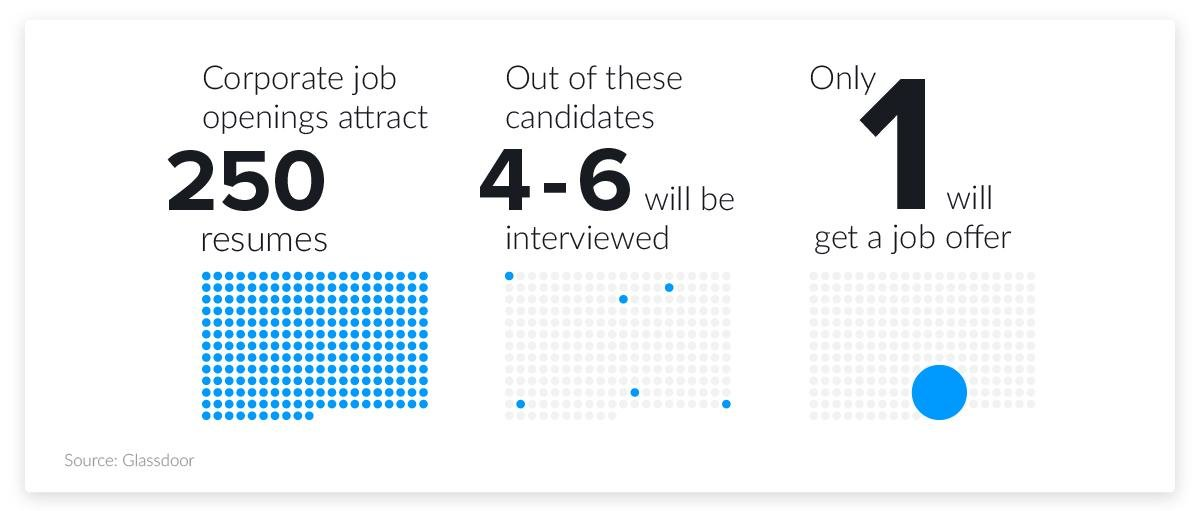What would the impact be to your organization if you hired the wrong leader into a key, role?
According to a SHRM study, the direct cost of turnover due to poor culture and strategy fit is between 50-60% of the person’s annual salary. This does not include indirect and opportunity costs associated with a poor hire.
Finding and evaluating top talent can be difficult in today’s challenging business climate. The availability of good talent varies dramatically based on the role and industry. To keep pace, organizations look to external resources to locate viable talent, gather predictive insights on candidates, and get fit right.
Where did you go wrong with your last hire? Candidates that emerge at the top of your short list may not be the best fit after all. Talent leaders and hiring managers continue to have difficulty narrowing down the talent pool from a large list of applicants. Hiring managers need reliable and valid tools and methods to minimize subjectivity and increase predictiveness and be aware of faulty methods for predicting fit, such as:
- People who interview well.
- People who have a profile similar to current leaders – look, demeanor, style.
- People who are liked.
- People who attended the “right” college.
- People who worked at branded companies.
Why can’t internal recruiters fill all open positions?
Corporate recruiters are under pressure to fill positions quickly and receive an average of 250 resumes per role. Partnering with an external recruiting partner for hard-to-fill, time-intensive roles allows internal talent acquisition to be successful filling higher-volume, higher-impact positions. External recruiting partners can bring objectivity and a fresh perspective, leveraging their unique network of contacts and relationships to help extend marketing reach. They are experts at thinking beyond the job description and developing creative sourcing strategies. Some search firms have unique capabilities in the areas of technology (i.e., applicant tracking) and assessment (i.e., leadership capabilities), which work in tandem to increase the flow and quality of candidates.
The most successful search firms operate as a strategic extension of the corporate recruitment function and go to great lengths to positively represent the employment brand. The experience for candidates is critical: 78% of job candidates say the overall candidate experience they get is an indicator of how a company values its people. (Talent Adore).

How do external recruiters find passive candidates (a dirty little secret…those are the candidates you really want)?
Recruiting passive candidates takes salesmanship, relationship building skills, and a genuine interest in helping people. External recruiters connect with candidates at a deeper level and identify what’s most important to a candidate in a career move. Building relationships is what we thrive one. Passive recruiting requires selling the role based on a candidate’s values and goals. What does your company and the job have to offer? Are you prepared to be convincing in your sales pitch?
- 86% of HR professionals say recruitment is becoming more like marketing. (iCIMS)
- 1 in 4 Americans were not looking for a job when they found their current job (iCIMS)
Why can predicting fit be so difficult?
Getting the prediction equation right on a consistent basis requires going below the surface. What candidates want recruiters to see is not what predicts. It’s often “window dressing.” You need to go below the surface to assess:
- Capacity to solve problems and deal with complexity
- Key character attributes – motivation, openness, perseverance, honesty
- Possible derailers – stress management, conflict avoidance, risk aversion
- Commitment to the work and mission
The “digging” tools required to get beneath the surface of a candidate include:
- Experience – Does the candidate have the necessary skill set and track record?
- Cultural Fit – How well does the candidate align with the company’s mission, vision and values?
- Assessments – How well does the candidate match the role-defined competencies and traits?
- Behavioral Interviews – How well does the candidate demonstrate why they are a good fit for the job and company?
- Job Simulations – For certain roles, how does a candidate respond and perform when ask to execute sample of work
What else are recruiters NOT telling us?
The best recruiters – internal or external – follow some key best practices. While there are no “silver bullets,” these tenants will at least tilt the odds in favor of the recruiter and lead to great talent search success:
- The recruiter hiring manager relationship is a partnership, treat it as one.
- Have a sense of urgency when making a decision. The best candidates are off the market in 10 days...time kills deals!
- Prepare for the interview or you might lose that A player you were hoping for. In a recent PwC survey, 49% of job seekers said they’ve turned down an offer because of a bad candidate experience.
- Be open to interviewing candidates that do not fit your ideal candidate profile.
- Select a candidate based on more than just a feeling
It is our sincere hope that the information you just read – from the words of two fellow recruiters – will give you helpful insights into how to get fit right in recruiting. The stakes are high when trying to select the best talent for your clients and organization – internal and external. Every hiring decision counts. Dig deep, follow best practices, and don’t ever give up or sacrifice when searching for great talent.



